Puntland National Examination Board
Form Four Geography Examination Answer sheet, June 2011
PART ONE: 10 Multiple Choices Questions 10 marks
1-C,
2-C,
3-D,
4-C,
5-A,
6-B,
7-B,
8-A,
9-A,
10-A.
PART TWO: Structured Questions
ANSWERS: QUESTION ONE (6 marks)
a) Define the terms
-
- (i) Transport: movement of people and goods from place to another
- (ii) Communication: transmission of information from one place or person to another
b) Two advantages of road transport:
-
- It is very flexible; it makes it possible to move goods from door to door
- It is relatively fast over short distances
- It can be built or repaired in stages while still in use
- It offers accessibility to many areas of a country
- It is cheaper to establish than other means of land transport eg railways and pipelines
- It is convenient, because vehicles move when and where there is need for them
- The cost of maintenance is low as road has many users who contribute its maintenance
C. Two ways in which communication contributes to economic development of Puntland
-
- Communication enhances globalization
- Leads promotion of tourism industry
- Creates employment opportunities
- Movement of goods and services has been enhanced
- Creates sense of competition between merchants, manufacturers or producers
- It assists in development of trade
- Market conditions can be immediately transmitted from place to another
- Disasters can be communicated rapidly and aid brought quickly
ANSWERS: QUESTION TWO
a) (I) The wooden box shown in the figure is a Stevenson screen
(ii) Maximum thermometer and minimum thermometer is the two instruments shown in the figure and kept in the Stevenson screen. Wet bulb thermometer and dry bulb thermometer are also kept in the Stevenson screen but they are not shown in the figure.
(iii) a) To prevent insulation or sun’s heat from reaching inside of the Stevenson screen is the main reason why it is painted white.
b)To allow free entry of air is the main reason why the wooden box has slatted sides
c) Legs help Stevenson to stand raised from ground and be away from influence of earth radiation or moisture at ground level
iv) It is sited in the weather station on a stand about 121 cm above ground level to be protected from any effect of animal or people
ANSWERS: QUESTION THREE
a) Livestock farming is raising animals either for subsistence, farmer to feed his family or for commercial purposes to sell the product in the market or abroad.
b) Nomadic pastoralism is a system of animal farming in which farmer moves from one place to another with his animals in search of water and pasture.
C) Characteristics of nomadic pastoralists in Puntland
-
- Quantity as opposed to quality of animals is emphasized
- Pastoralists raid by neighbours or among themselves
- Animals are grazed communally
- Animals are kept for subsistence (provide meat, milk and blood)
- They use natural pasture to graze their animal
- They rear different types of animals
- They rear to increase their herds because man’s social status in the community determines the number of animals he owns
- They normally practiced in areas of low and reliable rainfall
- Movement of pastoralists is determined by the availability of water and pasture and biting insects (tsetse fly) and wildlife presence which kill animals
d) Measures government should take to improve pastoral farming in Puntland
-
- Provision of water eg sinking boreholes and construction of dams
- Control diseases and pests by vetinary or extensive officers
- Dips have constructed and spraying animals encouraged
- Introduction of improved pastures or planting of fodder crops
- Introduction of drought resistant grasses
- Construction of roads has taken place
- Advised on proper animal rearing methods
- Improve quality of livestock by cross-breeding
- Educated pastoralists on benefits of reducing the size of animals
- Encourage pastoralists on keeping animals as commercial basis
- Animal research centers are established to find their problem and solved
ANSWERS: QUESTION FOUR
I) State VI (vertical interval) or height difference between one contour and the next is 25 m
ii) Contour lines shown by dotted lined have been joined each to form a contour line
Iii) 300 m is the highest contour line shown on the map
Iv) The correct location of the word SEA is the SW corner on the mapped area below the zero m
V) X is the lower ground and Y is the higher ground. Hence, if man at X looks towards Y he is looking uphill.
Vi) Y to Z slope is steeper than X to Y
VI) Because contours become narrower at the top of the slope (Y to Z) and widely spaced at the bottom of the slope (X to Y)
ANSWERS: QUESTION FIVE
a) Explain the following terms:
(i) Death rate is the number of deaths in a year per 1000 people of the total population
(ii) Life expectancy is the average age to which people expect to live from birth to death
b) A scatter graph showing birth and death rates of seven countries in 2004
(I) Mozambique is the country with a birth rate of 36 per 1000 and a death rate of 24 per 1000
(ii) Natural population growth rate of Tanzania: 39 – 17 = 22 persons per 1000
(iii) Countries shown on the figure which experienced :
a) Sudan is the highest rate of natural population growth with 36 – 09 = 27 persons per 1000 people per year
b) Botswana is in natural population decline with 25 – 34 = -19 persons per 1000 people per year
c) With reference to Puntland, government is concerned by a rapid growth of population to
-
- Establish family planning programmes in the country
- Has mass media to create awareness about a need for a small family
- Use of contraceptives to control births
- Make awareness on danger of high population increase
- Government has incorporated family life education in the formal school
- Establish and develop population studies activities
- Encourage non-governmental NGO’s services
ANSWERS: QUESTION SIX
(a) Distinguishing between aridity and desertification
(i) Aridity: a state of land being deficient in moisture leading to scanty of vegetation
(ii) Desertification: productive agricultural land changing into desert step by step
(B)Negative effects of desertification:
-
- Lead to development of infertile soils
- Agricultural practices cannot be carries
- Exposes land to severe soil erosion
- Population pressure and conflicts as people migrate from some arid land
- Strong winds carries huge amount of dust or loess
- It can spread over nearby productive land
ANSWERS: QUESTION SEVEN
(a) (i) Weathering is the gradual breaking, disintegration and decay of rocks lie exposed to the .
(ii) Factors which influence weathering: climate, relief, chemical composition of rocks, structure and texture of rocks, plants and animals
b) According to the block diagram of an upland area in a temperate region
(i) Bare rocks, channel along which water flows and screes at the base of the high cliff are evidences showing that weathering has taken place in the area
(ii) Difference between weathering and erosion
-
- Weathering: gradual disintegration of rocks exposed to the weather
- Erosion: wearing away of rocks exposed to the agents of erosion – running water, wind and moving ice
(iii) Describing processes by which rivers may erode its channels in the area shown by the figure
-
- Hydraulic action: moving water has a quarrying effect on both sides and the bed
- Corrosion or abrasion: wearing away river bed and banks using its load as grinding tool.
- Solution: some minerals in some rocks like limestone dissolves with water and flows them
- Attrition: fragments produced by constant collision by load particles
ANSWERS: QUESTION EIGHT
(a) Industry is transfer of raw materials into new products
(b) Problems facing industries in Puntland
-
- Inadequate capital
- Low or poor technological know-how
- Shortage of raw materials
- Poor transport system
- Poor or low marketing system
- Level of illiteracy is high in some areas
- Harsh environment like Guban areas
- Civil wars which results in mass destruction
- Poor or inadequate communication eg satellite and internet facilities
C) Factors that influence the location of industries
-
- There must be abundant supply of raw materials
- To run an industry, fuel and power is necessary
- Availability of technicians is also necessary
- Labour intensive industries require large labour forces
- Good transport facilities for both raw materials and end products is also necessary
- Industry is located near markets which consume its products
- Government encourages or discourages industries in a particular area
d) Measures that should be taken to control rural-urban migration
-
- Decentralization of industries: if work is available in rural areas, most people will stay there
- Improved education: school curriculum should emphasize rural development
- Modernization of agriculture: if farmers have access to loans and help with improved farming techniques they are likely to stay in rural areas
ANSWERS: QUESTION NINE
In Indonesia, an earthquake
(i) Vulcanicity is the movement of magma in the earth’s crust or emitted through the molten materials and pours into the surface as lava or ash
(ii) On the figure Y stands for the “epicenter” the point at which earthquake hit and destroyed
(iii) The greatest damage is experienced by the city at Y which is nearest to the focus where vibration originates in the interior of earth.
(iv) Problems which might be resulted by earthquake in the area
-
- Many lives can be lost as a result of a volcanic eruption
- Floods produced by rain mixed with ash and dust blown up
- fast moving mudflows are created
- diseases and injures caused by lack of clean water
- starvation because of lack of enough to eat
ANSWERS: QUESTION TEN
(a) Land pollution: contamination caused by wastes from industries and urban centers damped onto the land
(b) Effects of land pollution on Puntland environment
-
- Garbage dumped can be breeding ground for harmful insects like cockroaches and flies
- Rusted metals and broken bottles may cause accidents
- Accumulated garbage may block roads and other transport lines
- Garbage dumped can cause land contamination
- Land contamination leads to disruption of chemical balance of soil by rain loaded nitrates and sulphates
- Decomposing garbage may can fire outbreak
- Land contamination leads great losses of micro-organism which contribute to ecology
C) Reasons why we manage and conserve the environment
-
- Soil from which man obtains his food is one of the most important
- Through management and conservation of the environment, genetic resources are maintained
- One way of protecting water catchment areas is conserve the forests
- Some natural resources in the environment are extracted, processed and sold to earn income
- Some animals and plants have been over exploited through hunting and gathering
- Ensure sustainable use of our forest resources
- Aquatic ecosystem is necessary so as not to disturb their homeostasis
- We should prevent soil erosion to sustain proper growth of crops on fields
PART 3: EXTENDED QUESTIONS:
1 (a) Factors that influence exploitation of minerals
-
- Size of the deposit: if the percentage of the metal content of the mineral is high, it is extracted otherwise left
- Quality of the mineral: High quality mineral is extracted and low quality mineral is left
- The ease of mining: if the mineral can be easily extracted, it should be exploited
- The ease of transport: if mineral deposit is easily accessible, it is extracted
- The value of the mineral: some minerals like gold, diamond and uranium are in great demand all over the world. So these are extracted.
- Price fluctuation: prices may not be constant as a large amount of mineral are produced
- Capital investment is also required
b) Ways that minerals would contribute to the economy of Puntland if exploited
-
- Source of employment: Many people find work in mines or related industries
- Provision of social service: mines provide amenities for their staff like schools, health clinics and sporting facilities.
- Improving standard of living: when people have jobs and access to good social services their standard of living improves.
- Development of transport links and infrastructures: when a company starts mining in an area, they often build roads and improve access to electricity and water. This is beneficial to the wider community.
- Development of related industries: after minerals have been mined, they have to be processed this leads to the setting up of processing and packaging factories, creating more jobs and contributing to the economic development
- Development of towns: a town is developed at the mining because people working at the mine buy products from it.
- Development of skills: the mining company introduces technology and trains people in its use these skills can be applied in the other fields
- Earn foreign exchange: most minerals are exported and sold over seas. This money is used to pay imports.
2. (I) Energy can be defined as the power or fuel needed to run a machine or to assist human production.
(ii) Differentiating between Renewable and non-renewable sources of energy
-
- Renewable sources of energy: refers to those sources of energy that can be produced or regenerated. This means they are inexhaustible or can be used over and over again. They include HEP, solar energy, wind energy, biomass, tidal, etc
- Non-renewable Sources of energy: refers to that energy which cannot be reproduced or regenerated. This means they are exhaustible or they can never be increased or replaced once used. They include oil, uranium, coal, uranium, etc.
(iii) Oil, coal and natural gas included non-renewable sources of energy
(iv) Factors that favour the location of HEP station
3. (i) Trade refers buying and selling of goods and services between two persons or firms
(ii) Factors that influence trade
-
- Difference in resource endowment: a country which produces surplus products exports to others and country which produces insufficient ones imports from others
- Population factor: besides being the work force in all human activities, people is the market for both goods and services
- Stages of economic development: differences in technological capability of countries resulted difference in industrial products as well as primary products
- Extent of foreign investment: in developing countries this affects volume, type and pattern of world trade.
- Communication network: the volume of trade and variety of goods traded depend to a large extent on the type and quality of transport network
- Demand and supply: industrialized countries demand raw materials from developing countries while developing countries demand manufactured goods from industrialized countries
- Government policy: the government determines who to trade with, what to trade and the volume of trade. It is able to achieve this by imposing tariffs and quotas.
(iii) Identifying major exports and major imports of Puntland
Major Puntland exports include
-
- Livestock and livestock products
- Forest products such as frankincense and myrrh
- Man power including both manual and skilled laborers
- Minerals such as salt refined from sea water in evaporation form
- Fish and fish products such as sharks and lobsters
Major Puntland imports include
-
- Food stuffs
- Manufacturing articles
- Machinery and spare parts
- Drags and medicines
- Textiles and shoes
- Margarine and perfumes
4. (i) Wildlife refers to combination of undomesticated plants and animals in their natural habitats and forming part of our natural resources
(ii) Significances of wildlife to man
-
- Forms basis of tourist industry
- Forests are sources of rivers
- Forests provide wood fuel, timber and its products and also for recreational purposed
- It is the basis for environmental protection
- Forests provide herbal medicines
- Leads employment opportunities
- Wildlife is a source of food, hides, ivory, etc
- Leads development of infrastructures
- It is a source of foreign exchange
- Leads to enhance researches
(iii) Problems facing wildlife in Puntland included
-
- Pressure on existing land resulting from population increase
- Poaching and hunting of animals
- Pests and diseases attack animals
- Droughts and forest fires are common
- Pollution caused mainly by man’s activities
- Soil erosion threatening plant life
- Migration of wildlife especially birds and animals
- Competition for the scarce sources with the pastoralists
- Inadequate capital and lack of trained personnel
- Overexploitation of water resources





Recent Comments